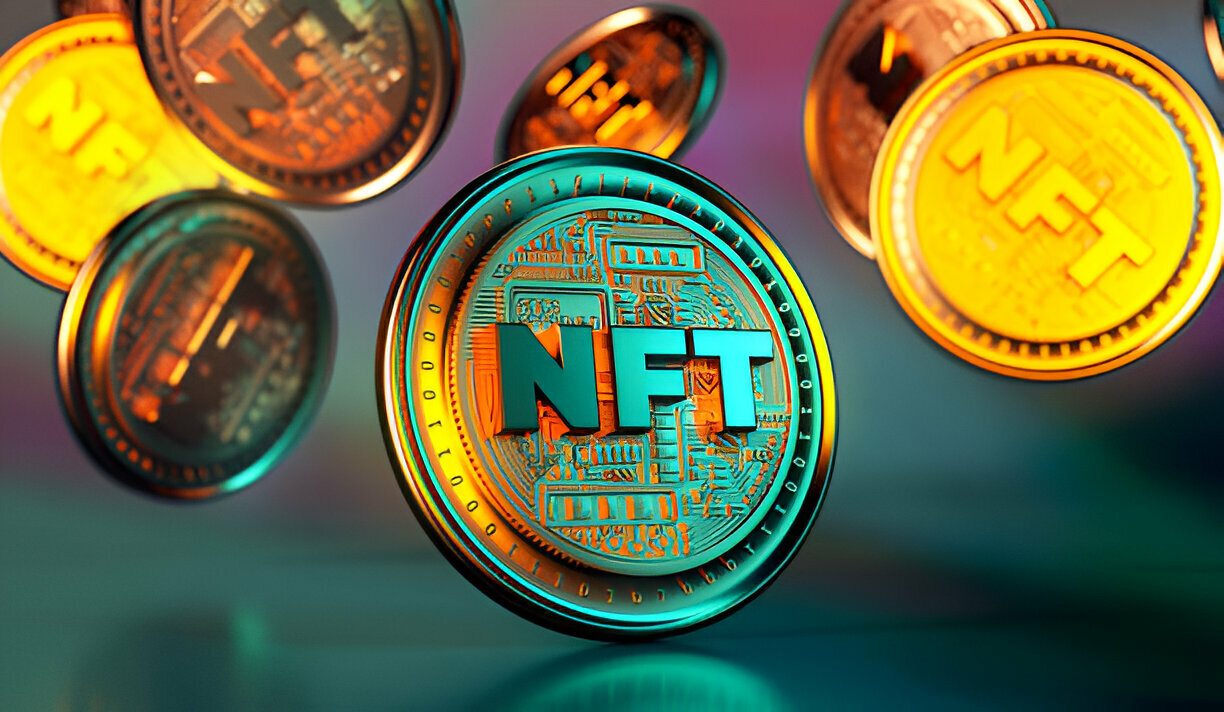Layer 2 Solutions: Scaling the Blockchain

The world of blockchain technology holds great promise, offering a secure and decentralized way to store and transfer value. However, as more people use blockchains like Bitcoin and Ethereum, they face a challenge: scalability. These blockchains can struggle with a large number of transactions, leading to slow speeds and high fees. That’s where Layer 2 solutions come in, offering new ways to scale up blockchains and unlock their full potential.
The Problem of Scalability:
Think of a highway built for only a few cars. When too many cars try to use it, traffic jams slow everyone down. Blockchains have a similar issue. Each block can only handle a limited number of transactions. Processing too many at once can cause:
- Slow Transaction Speeds: Transactions can take a long time to confirm, which isn’t ideal for users.
- High Fees: When a blockchain is busy, fees for processing transactions can go up, making it costly to use.
The Role of Layer 2:
Layer 2 solutions are extra layers built on top of existing blockchains. They handle transactions off the main blockchain (Layer 1), reducing the burden. This frees up space on Layer 1 for important tasks like security, while making transactions faster and cheaper on Layer 2.
Types of Layer 2 Solutions:
Several innovative Layer 2 solutions are emerging:
- Rollups: These bundle multiple transactions off-chain, process them, and then submit the results to Layer 1 for verification. This cuts down on data stored on Layer 1, making transactions quicker and cheaper.
- State Channels: Secure channels between parties where transactions happen off-chain. Only the final result is settled on Layer 1, which is good for frequent transactions between a small group.
Benefits of Layer 2 Solutions:
- Faster Transactions: Layer 2 processes transactions much quicker than Layer 1, improving user experience.
- Lower Fees: By easing the load on Layer 1, Layer 2 reduces fees, making blockchain use more affordable.
- Scalability: Layer 2 makes it possible for blockchain to handle more transactions, paving the way for wider adoption.
Challenges and Things to Consider:
While Layer 2 solutions offer exciting possibilities, there are factors to keep in mind:
- Security: They rely on the security of Layer 1.
- User Experience: Using Layer 2 might be more complex than Layer 1.
- Interoperability: Different Layer 2 solutions may not work together smoothly.
The Future of Blockchain Scaling:
Layer 2 solutions are crucial for blockchain’s future. As they evolve, we can expect faster, cheaper, and more adaptable blockchains. Developers, researchers, and users working together will shape a strong and secure Layer 2 system.
Conclusion:
Layer 2 solutions aren’t a perfect fix, but they’re a big leap forward for blockchain scalability. By improving Layer 1’s limits, they set the stage for blockchains to become widely used for finance, data storage, and more. As Layer 2 grows, we’ll see a more scalable, efficient, and accessible blockchain world for everyone.

 Bitcoin
Bitcoin  Ethereum
Ethereum  Tether
Tether  XRP
XRP  USDC
USDC  TRON
TRON  Lido Staked Ether
Lido Staked Ether  Dogecoin
Dogecoin  Cardano
Cardano  Figure Heloc
Figure Heloc  Wrapped stETH
Wrapped stETH  Wrapped Bitcoin
Wrapped Bitcoin  WhiteBIT Coin
WhiteBIT Coin  Hyperliquid
Hyperliquid  Chainlink
Chainlink  Bitcoin Cash
Bitcoin Cash  USDS
USDS  Binance Bridged USDT (BNB Smart Chain)
Binance Bridged USDT (BNB Smart Chain)  Stellar
Stellar  LEO Token
LEO Token  Wrapped eETH
Wrapped eETH  WETH
WETH  Zcash
Zcash  Ethena USDe
Ethena USDe  Litecoin
Litecoin  Coinbase Wrapped BTC
Coinbase Wrapped BTC  Monero
Monero  Hedera
Hedera  Avalanche
Avalanche  Sui
Sui  Shiba Inu
Shiba Inu  Toncoin
Toncoin  Uniswap
Uniswap  Dai
Dai  Ethena Staked USDe
Ethena Staked USDe  Polkadot
Polkadot  Cronos
Cronos  MemeCore
MemeCore  USDT0
USDT0  Mantle
Mantle  Canton
Canton  World Liberty Financial
World Liberty Financial  sUSDS
sUSDS  PayPal USD
PayPal USD  Bittensor
Bittensor  Internet Computer
Internet Computer  NEAR Protocol
NEAR Protocol  Aave
Aave  USD1
USD1  Bitget Token
Bitget Token  BlackRock USD Institutional Digital Liquidity Fund
BlackRock USD Institutional Digital Liquidity Fund  Currency One USD
Currency One USD  OKB
OKB  Ethereum Classic
Ethereum Classic  Pepe
Pepe  Tether Gold
Tether Gold  Aster
Aster  Aptos
Aptos  Ethena
Ethena  Falcon USD
Falcon USD  Pump.fun
Pump.fun  Jito Staked SOL
Jito Staked SOL  Jupiter Perpetuals Liquidity Provider Token
Jupiter Perpetuals Liquidity Provider Token  Binance-Peg WETH
Binance-Peg WETH  Ondo
Ondo  Solana
Solana  Pi Network
Pi Network  POL (ex-MATIC)
POL (ex-MATIC)  HTX DAO
HTX DAO  Worldcoin
Worldcoin  KuCoin
KuCoin  USDtb
USDtb  Algorand
Algorand  Filecoin
Filecoin  Official Trump
Official Trump  PAX Gold
PAX Gold  Rocket Pool ETH
Rocket Pool ETH  VeChain
VeChain  Cosmos Hub
Cosmos Hub  syrupUSDT
syrupUSDT  Arbitrum
Arbitrum  BFUSD
BFUSD  Binance Staked SOL
Binance Staked SOL  Gate
Gate  Binance Bridged USDC (BNB Smart Chain)
Binance Bridged USDC (BNB Smart Chain)  Kinetiq Staked HYPE
Kinetiq Staked HYPE  Sky
Sky  syrupUSDC
syrupUSDC  Wrapped BNB
Wrapped BNB  Function FBTC
Function FBTC  Render
Render  Story
Story  Lombard Staked BTC
Lombard Staked BTC  Global Dollar
Global Dollar  Liquid Staked ETH
Liquid Staked ETH  Ripple USD
Ripple USD  Circle USYC
Circle USYC  NEXO
NEXO  Sei
Sei  Jupiter
Jupiter  Solv Protocol BTC
Solv Protocol BTC  Renzo Restaked ETH
Renzo Restaked ETH  Bonk
Bonk  Pudgy Penguins
Pudgy Penguins  Aerodrome Finance
Aerodrome Finance  Superstate Short Duration U.S. Government Securities Fund (USTB)
Superstate Short Duration U.S. Government Securities Fund (USTB)  Arbitrum Bridged WBTC (Arbitrum One)
Arbitrum Bridged WBTC (Arbitrum One)  PancakeSwap
PancakeSwap  Mantle Staked Ether
Mantle Staked Ether  Virtuals Protocol
Virtuals Protocol  OUSG
OUSG  Dash
Dash  Immutable
Immutable  Janus Henderson Anemoy AAA CLO Fund
Janus Henderson Anemoy AAA CLO Fund  Rain
Rain  clBTC
clBTC  Artificial Superintelligence Alliance
Artificial Superintelligence Alliance  Celestia
Celestia  Optimism
Optimism  StakeWise Staked ETH
StakeWise Staked ETH  Ondo US Dollar Yield
Ondo US Dollar Yield  Injective
Injective  Stacks
Stacks  Jupiter Staked SOL
Jupiter Staked SOL  Lido DAO
Lido DAO  cgETH Hashkey Cloud
cgETH Hashkey Cloud  AB
AB  Starknet
Starknet  Curve DAO
Curve DAO  The Graph
The Graph  Beldex
Beldex  Tezos
Tezos  Polygon PoS Bridged DAI (Polygon POS)
Polygon PoS Bridged DAI (Polygon POS)  L2 Standard Bridged WETH (Base)
L2 Standard Bridged WETH (Base)  tBTC
tBTC  USDai
USDai  Polygon Bridged USDC (Polygon PoS)
Polygon Bridged USDC (Polygon PoS)  SOON
SOON  IOTA
IOTA  SPX6900
SPX6900  Usual USD
Usual USD  Arbitrum Bridged WETH (Arbitrum One)
Arbitrum Bridged WETH (Arbitrum One)  Pyth Network
Pyth Network  DoubleZero
DoubleZero  FLOKI
FLOKI  Kaia
Kaia  Telcoin
Telcoin  Marinade Staked SOL
Marinade Staked SOL  Decred
Decred  Mantle Bridged USDT (Mantle)
Mantle Bridged USDT (Mantle)  Ether.fi
Ether.fi  Maple Finance
Maple Finance  Sonic
Sonic  Ethereum Name Service
Ethereum Name Service  TrueUSD
TrueUSD  Ether.Fi Liquid ETH
Ether.Fi Liquid ETH  Stader ETHx
Stader ETHx  GTETH
GTETH  Trust Wallet
Trust Wallet  The Sandbox
The Sandbox  Steakhouse USDC Morpho Vault
Steakhouse USDC Morpho Vault  Conflux
Conflux  Bitcoin SV
Bitcoin SV  Plasma
Plasma  BitTorrent
BitTorrent  ether.fi Staked ETH
ether.fi Staked ETH  GHO
GHO  sBTC
sBTC  MYX Finance
MYX Finance  JasmyCoin
JasmyCoin  Sun Token
Sun Token  dogwifhat
dogwifhat  Coinbase Wrapped Staked ETH
Coinbase Wrapped Staked ETH  GALA
GALA  Helium
Helium  Spiko EU T-Bills Money Market Fund
Spiko EU T-Bills Money Market Fund  ARK
ARK  Swell Ethereum
Swell Ethereum  Flow
Flow  Avalanche Bridged BTC (Avalanche)
Avalanche Bridged BTC (Avalanche)  USDD
USDD  Theta Network
Theta Network  Binance-Peg Dogecoin
Binance-Peg Dogecoin  Pendle
Pendle  Wrapped HYPE
Wrapped HYPE  BENQI Liquid Staked AVAX
BENQI Liquid Staked AVAX  Decentraland
Decentraland  AINFT
AINFT  Merlin Chain
Merlin Chain  MimbleWimbleCoin
MimbleWimbleCoin  Raydium
Raydium  Ape and Pepe
Ape and Pepe  JUST
JUST  Arbitrum Bridged Wrapped eETH (Arbitrum)
Arbitrum Bridged Wrapped eETH (Arbitrum)  Concordium
Concordium  Polygon PoS Bridged WETH (Polygon POS)
Polygon PoS Bridged WETH (Polygon POS)  DeXe
DeXe  Olympus
Olympus  Aethir
Aethir  NEO
NEO  Aster Staked BNB
Aster Staked BNB  ZKsync
ZKsync  Unit Bitcoin
Unit Bitcoin  Ribbita by Virtuals
Ribbita by Virtuals  Kinesis Gold
Kinesis Gold  ApeCoin
ApeCoin  Chiliz
Chiliz  Mantle Restaked ETH
Mantle Restaked ETH  Compound
Compound  Binance-Peg BUSD
Binance-Peg BUSD  Walrus
Walrus  EigenCloud (prev. EigenLayer)
EigenCloud (prev. EigenLayer)  Humanity
Humanity  Gnosis
Gnosis  Falcon Finance
Falcon Finance  EURC
EURC  SwissBorg
SwissBorg  Janus Henderson Anemoy Treasury Fund
Janus Henderson Anemoy Treasury Fund  Zebec Network
Zebec Network  OriginTrail
OriginTrail  Lorenzo Wrapped Bitcoin
Lorenzo Wrapped Bitcoin  Arweave
Arweave  Legacy Frax Dollar
Legacy Frax Dollar  Fluid
Fluid  1INCH
1INCH  0G
0G  Wormhole
Wormhole  Ethena Staked ENA
Ethena Staked ENA  Vision
Vision  eCash
eCash  Basic Attention
Basic Attention  Zora
Zora  Jito
Jito  Mantle Bridged WETH (Mantle)
Mantle Bridged WETH (Mantle)  Treehouse ETH
Treehouse ETH  THORChain
THORChain  Moca Network
Moca Network  Fartcoin
Fartcoin  ETHPlus
ETHPlus  Satoshi Stablecoin
Satoshi Stablecoin  crvUSD
crvUSD  Loaded Lions
Loaded Lions  WEMIX
WEMIX  MultiversX
MultiversX  Synthetix
Synthetix  Savings Dai
Savings Dai  Polygon Bridged WBTC (Polygon POS)
Polygon Bridged WBTC (Polygon POS)  Drift Staked SOL
Drift Staked SOL  Cheems Token
Cheems Token  Reserve Rights
Reserve Rights  Fidelity Digital Interest Token
Fidelity Digital Interest Token  dYdX
dYdX  Noble USDC
Noble USDC  Golem
Golem  Wrapped AVAX
Wrapped AVAX  Blockchain Capital
Blockchain Capital  Resolv USR
Resolv USR  Onyxcoin
Onyxcoin  USDa
USDa  OpenEden OpenDollar
OpenEden OpenDollar  Cap USD
Cap USD  Livepeer
Livepeer  cWBTC
cWBTC  Bybit Staked SOL
Bybit Staked SOL  Kinetiq Earn Vault
Kinetiq Earn Vault  Amp
Amp  AtomOne
AtomOne  Axie Infinity
Axie Infinity  RealLink
RealLink  Meteora
Meteora  Solv Protocol Staked BTC
Solv Protocol Staked BTC  Compounding OpenDollar
Compounding OpenDollar  Railgun
Railgun  Toshi
Toshi  Kinesis Silver
Kinesis Silver  BTSE Token
BTSE Token  Brett
Brett  Berachain
Berachain  Legacy Token
Legacy Token  MX
MX  Creditcoin
Creditcoin  Tradable NA Rent Financing Platform SSTN
Tradable NA Rent Financing Platform SSTN  Ronin
Ronin  Kamino
Kamino  Core
Core  Resolv wstUSR
Resolv wstUSR  StandX DUSD
StandX DUSD  Universal BTC
Universal BTC  KAITO
KAITO  Lombard
Lombard  Linea
Linea  Sahara AI
Sahara AI  Qtum
Qtum  Ecoreal Estate
Ecoreal Estate  Kraken Wrapped BTC
Kraken Wrapped BTC  AIOZ Network
AIOZ Network  Cronos Bridged USDC (Cronos)
Cronos Bridged USDC (Cronos)  Kusama
Kusama  Sky Coin
Sky Coin  Terra Luna Classic
Terra Luna Classic  Prom
Prom  SuperVerse
SuperVerse  Slash Vision Labs
Slash Vision Labs  SoSoValue
SoSoValue  BitMart
BitMart  LayerZero
LayerZero  AI Companions
AI Companions  Aster USDF
Aster USDF  SafePal
SafePal  Kava
Kava  KOGE
KOGE  Mina Protocol
Mina Protocol  Akash Network
Akash Network  yearn.finance
yearn.finance  0x Protocol
0x Protocol  Theta Fuel
Theta Fuel  InfiniFi USD
InfiniFi USD  Origin Ether
Origin Ether  Binance-Peg SOL
Binance-Peg SOL  Axelar
Axelar  Convex Finance
Convex Finance  Midas mF-ONE
Midas mF-ONE  Arkham
Arkham  DigiByte
DigiByte  StarkGate Bridged USDC (Starknet)
StarkGate Bridged USDC (Starknet)  Four
Four  UCHAIN
UCHAIN  DeepBook
DeepBook  Giggle Fund
Giggle Fund  Gas
Gas  Mog Coin
Mog Coin  GUSD
GUSD  Useless Coin
Useless Coin  Nexus Mutual
Nexus Mutual  Shuffle
Shuffle  币安人生 (BinanceLife)
币安人生 (BinanceLife)  Nano
Nano  Dog (Bitcoin)
Dog (Bitcoin)  Movement
Movement  Keeta
Keeta  Tokenize Xchange
Tokenize Xchange  Staked USDai
Staked USDai  BUILDon
BUILDon  Rekt
Rekt  Ravencoin
Ravencoin  GoMining Token
GoMining Token  Spiko US T-Bills Money Market Fund
Spiko US T-Bills Money Market Fund  ChainOpera AI
ChainOpera AI  Wrapped Aave Ethereum USDC
Wrapped Aave Ethereum USDC  Nervos Network
Nervos Network  STASIS EURO
STASIS EURO  Non-Playable Coin
Non-Playable Coin  Conscious Token
Conscious Token  Oasis
Oasis  River
River  Flare Bridged XRP (Flare)
Flare Bridged XRP (Flare)  Theo Short Duration US Treasury Fund
Theo Short Duration US Treasury Fund  AUSD
AUSD  Melania Meme
Melania Meme  Ether.fi Staked BTC
Ether.fi Staked BTC  YieldFi yToken
YieldFi yToken  Polygon Bridged weETH (Katana)
Polygon Bridged weETH (Katana)  Zilliqa
Zilliqa  Ultima
Ultima  Phantom Staked SOL
Phantom Staked SOL  Baby Doge Coin
Baby Doge Coin  Super OETH
Super OETH  Avantis
Avantis  DeAgentAI
DeAgentAI  Stargate Finance
Stargate Finance  MAG7.ssi
MAG7.ssi  Bedrock BTC
Bedrock BTC  Apollo Diversified Credit Securitize Fund
Apollo Diversified Credit Securitize Fund  WeFi
WeFi  Minidoge
Minidoge  DOLA
DOLA  Grass
Grass  MetaDAO
MetaDAO  Turbo
Turbo  Threshold Network
Threshold Network  AgentFun.AI
AgentFun.AI  cat in a dogs world
cat in a dogs world  Sushi
Sushi  CoinEx
CoinEx  Celo
Celo  Crypto.com Staked ETH
Crypto.com Staked ETH  Wrapped Aave Ethereum USDT
Wrapped Aave Ethereum USDT  KUB Coin
KUB Coin  Wrapped Aave Ethereum WETH
Wrapped Aave Ethereum WETH  XPR Network
XPR Network  Plume
Plume  Sui Bridged WBTC (Sui)
Sui Bridged WBTC (Sui)  Unibase
Unibase  Popcat
Popcat  Ozone Chain
Ozone Chain  Pirate Chain
Pirate Chain  Drift Protocol
Drift Protocol  Metal Blockchain
Metal Blockchain  Rollbit Coin
Rollbit Coin  Infrared Bera
Infrared Bera  Safe
Safe  Bio Protocol
Bio Protocol  Astar
Astar  Gaib AI Dollar Alpha USDC
Gaib AI Dollar Alpha USDC  Velo
Velo  Unit Pump
Unit Pump  Qubic
Qubic  Anzen USDz
Anzen USDz  Chia
Chia  Alchemist AI
Alchemist AI  Frax USD
Frax USD  USDA
USDA  Moonwell Flagship ETH (Morpho Vault)
Moonwell Flagship ETH (Morpho Vault)  Midas mHYPER
Midas mHYPER  Blur
Blur  Ostrich
Ostrich  AWE Network
AWE Network  VeThor
VeThor  cETH
cETH  CoW Protocol
CoW Protocol  TDCCP
TDCCP  Quantum Resistant Ledger
Quantum Resistant Ledger  Onchain Yield Coin
Onchain Yield Coin  VVS Finance
VVS Finance  ZIGChain
ZIGChain  Avalanche Bridged WETH (Avalanche)
Avalanche Bridged WETH (Avalanche)  Siacoin
Siacoin  Open Campus
Open Campus  Succinct
Succinct  Peanut the Squirrel
Peanut the Squirrel  Tradable Singapore Fintech SSL
Tradable Singapore Fintech SSL  Verus
Verus  Ring USD
Ring USD  VanEck Treasury Fund
VanEck Treasury Fund  Savings xDAI
Savings xDAI  QL1 Bridged USDT (QL1)
QL1 Bridged USDT (QL1)  SKALE
SKALE  Recall
Recall  APEX
APEX  ViciCoin
ViciCoin  DFDV Staked SOL
DFDV Staked SOL  Renzo Restaked LST
Renzo Restaked LST  MANTRA
MANTRA  Resolv Liquidity Provider Token
Resolv Liquidity Provider Token  IoTeX
IoTeX  Euler
Euler  aelf
aelf  Centrifuge
Centrifuge  Omni Network [Old]
Omni Network [Old]  Frax (prev. FXS)
Frax (prev. FXS)  ORDI
ORDI  CASH
CASH  Gems VIP
Gems VIP  Chutes
Chutes  GMX
GMX  Helder
Helder  Yala Stablecoin
Yala Stablecoin  MNEE USD Stablecoin
MNEE USD Stablecoin  TempleDAO
TempleDAO  Polymesh
Polymesh  VaultBridge Bridged WBTC (Katana)
VaultBridge Bridged WBTC (Katana)  COTI
COTI  Swop
Swop  HashKey Platform Token
HashKey Platform Token  Ankr Network
Ankr Network  Cronos Bridged USDT (Cronos)
Cronos Bridged USDT (Cronos)  Wrapped Centrifuge
Wrapped Centrifuge  Stargate Bridged USDC
Stargate Bridged USDC  LCX
LCX  RedStone
RedStone  Mashida
Mashida  Saros
Saros  Unit Plasma
Unit Plasma  BitDCA
BitDCA  Novem Pro
Novem Pro  Anoma
Anoma  Nexpace
Nexpace  Babylon
Babylon  EthereumPoW
EthereumPoW  Moo Deng
Moo Deng  Vana
Vana  Memecoin
Memecoin  XYO Network
XYO Network  UMA
UMA  Illuvium
Illuvium  Apro
Apro  BCGame Coin
BCGame Coin  Pleasing Gold
Pleasing Gold  staked USD1+
staked USD1+  PayFi Strategy Token USDC
PayFi Strategy Token USDC  Numeraire
Numeraire  Api3
Api3  Orca
Orca  Sologenic
Sologenic  Loopring
Loopring  Stargate Bridged WETH
Stargate Bridged WETH  Restaking Vault ETH
Restaking Vault ETH  Lagrange
Lagrange  sUSDa
sUSDa  FOLKS
FOLKS  pumpBTC
pumpBTC  EUR CoinVertible
EUR CoinVertible  Gama Token
Gama Token  COCA
COCA  Paycoin
Paycoin  Avant USD
Avant USD  Harmony
Harmony  Jelly-My-Jelly
Jelly-My-Jelly  Niza Global
Niza Global  L2 Standard Bridged WETH (Optimism)
L2 Standard Bridged WETH (Optimism)  Felix feUSD
Felix feUSD  Puff The Dragon
Puff The Dragon  GOHOME
GOHOME  Enjin Coin
Enjin Coin  Ore
Ore  Decentralized Social
Decentralized Social  f(x) Protocol fxUSD
f(x) Protocol fxUSD  AltLayer
AltLayer  Osmosis
Osmosis  Bridged Wrapped stETH (Gnosis)
Bridged Wrapped stETH (Gnosis)  Mask Network
Mask Network  Amnis Aptos
Amnis Aptos  Ontology
Ontology  ONFA
ONFA  Fulcrom
Fulcrom  Band
Band  Pundi X
Pundi X  f(x) USD Saving
f(x) USD Saving  Lucidum
Lucidum  Bridged Ether (StarkGate)
Bridged Ether (StarkGate)  VaultBridge Bridged ETH (Katana)
VaultBridge Bridged ETH (Katana)  APEX
APEX  Pleasing USD
Pleasing USD  sudeng
sudeng  OG Fan Token
OG Fan Token  Status
Status  USDX
USDX  Venus
Venus  Avant Staked USD
Avant Staked USD  Mine Blue
Mine Blue  Audiera
Audiera  Yield Guild Games
Yield Guild Games  Solar
Solar  Tellor Tributes
Tellor Tributes  Waves
Waves  Constellation
Constellation  Rocket Pool
Rocket Pool  ElizaOS
ElizaOS  Spark
Spark  GMT
GMT  Notcoin
Notcoin  Hyperbeat USDT
Hyperbeat USDT  Magic Eden
Magic Eden  Geodnet
Geodnet  Ridges AI
Ridges AI  BurnedFi
BurnedFi  Daku V2
Daku V2  Matrixdock Gold
Matrixdock Gold  Flux
Flux  io.net
io.net  tokenbot
tokenbot  Arbitrum Bridged USDC (Arbitrum)
Arbitrum Bridged USDC (Arbitrum)  Ventuals vHYPE
Ventuals vHYPE  Bitlight
Bitlight  Syndicate
Syndicate  HOME
HOME  Metaplex
Metaplex  Neiro
Neiro  Mainframe
Mainframe  Metis
Metis  BORA
BORA  Binance-Peg ZEC
Binance-Peg ZEC  Ardor
Ardor  BIM
BIM  Swarm Network
Swarm Network  Portal to Bitcoin
Portal to Bitcoin  Staked HYPE
Staked HYPE  OKZOO
OKZOO  WOO
WOO  Tokenlon
Tokenlon  Celium
Celium  Purr
Purr  MarsMi
MarsMi  Pax Dollar
Pax Dollar  Sui Bridged Ether (Sui)
Sui Bridged Ether (Sui)  QuantixAI
QuantixAI  Optio
Optio  IOST
IOST  ARK
ARK  Secret
Secret  Xertra
Xertra  BOOK OF MEME
BOOK OF MEME  iExec RLC
iExec RLC  StraitsX XUSD
StraitsX XUSD  Sui Bridged USDT (Sui)
Sui Bridged USDT (Sui)  TAGGER
TAGGER  Lista DAO
Lista DAO  Degen
Degen  Solv Protocol SolvBTC Jupiter
Solv Protocol SolvBTC Jupiter  Dialectic USD Vault
Dialectic USD Vault  Tornado Cash
Tornado Cash  Bridged Tether (opBNB)
Bridged Tether (opBNB)  aixbt
aixbt  Magic Internet Money (Ethereum)
Magic Internet Money (Ethereum)  Siren
Siren  VNDC
VNDC  Hive
Hive  Chromia
Chromia  Orbs
Orbs  BUSD
BUSD  Yooldo Games
Yooldo Games  OpenLedger
OpenLedger  Bancor Network
Bancor Network  Blast
Blast  Zedxion
Zedxion  Terra
Terra  Energy Web
Energy Web  ConstitutionDAO
ConstitutionDAO  Stronghold
Stronghold  B3 (Base)
B3 (Base)  Anvil
Anvil  XPIN Network
XPIN Network  Alchemy Pay
Alchemy Pay  Comedian
Comedian  WorldAssets
WorldAssets  Ocean Protocol
Ocean Protocol  Definitive
Definitive  OVERTAKE
OVERTAKE  Big Time
Big Time  SWFTCOIN
SWFTCOIN  Escoin
Escoin  Somnia
Somnia  Ronin Bridged WETH (Ronin)
Ronin Bridged WETH (Ronin)  Firo
Firo  Janction
Janction  Powerledger
Powerledger  DIA
DIA  Whiteheart
Whiteheart  aura
aura  MVL
MVL  Avici
Avici  Sign
Sign  Manta Network
Manta Network  Delysium
Delysium  Songbird
Songbird  Mezo Wrapped BTC
Mezo Wrapped BTC  Cronos Bridged WBTC (Cronos)
Cronos Bridged WBTC (Cronos)  IQ
IQ  Bonfida
Bonfida  GAL (migrated to Gravity - G)
GAL (migrated to Gravity - G)  KGeN
KGeN  Aevo
Aevo  SEDA
SEDA  NKYC Token
NKYC Token  Balancer
Balancer  Resolv
Resolv  BTU Protocol
BTU Protocol  PYTHIA
PYTHIA  VeraOne
VeraOne  Spell
Spell  MindWaveDAO
MindWaveDAO  YZY
YZY  Audius
Audius  Hivemapper
Hivemapper  Lisk
Lisk  Bitcoin Hyper
Bitcoin Hyper  CARV
CARV  Mountain Protocol USD
Mountain Protocol USD  Overnight.fi USD+
Overnight.fi USD+  4
4  Clearpool
Clearpool  Kyber Network Crystal
Kyber Network Crystal  Orderly
Orderly  Mythos
Mythos  ECOMI
ECOMI  Liquity
Liquity  Gemini Dollar
Gemini Dollar  Targon
Targon  Gigachad
Gigachad  Acet
Acet  Zentry
Zentry  Sygnum FIUSD Liquidity Fund
Sygnum FIUSD Liquidity Fund  CJournal
CJournal  Ergo
Ergo  TokenPocket Token
TokenPocket Token  BOLD
BOLD  MiL.k
MiL.k  Allora
Allora  Tokamak Network
Tokamak Network  Noble Dollar (USDN)
Noble Dollar (USDN)  Hex Trust USD
Hex Trust USD  Nillion
Nillion  Cloud
Cloud  Atoshi
Atoshi  Osaka Protocol
Osaka Protocol  ai16z
ai16z  Solayer
Solayer  Sai
Sai  Auki
Auki  Ontology Gas
Ontology Gas  Across Protocol
Across Protocol  HarryPotterObamaSonic10Inu (ETH)
HarryPotterObamaSonic10Inu (ETH)  StorX
StorX  Bridged Wrapped Bitcoin (StarkGate)
Bridged Wrapped Bitcoin (StarkGate)  Venice Token
Venice Token  Chain-key Bitcoin
Chain-key Bitcoin  SAFEbit
SAFEbit  Freysa AI
Freysa AI  Marinade
Marinade  Pre-SP
Pre-SP  Moonwell
Moonwell  Hyperbeat LST Vault
Hyperbeat LST Vault  DORA
DORA  ChangeNOW
ChangeNOW  TROLL
TROLL  Sapien
Sapien  CYBER
CYBER  Echelon Prime
Echelon Prime  Bounce
Bounce  Bless
Bless  Goatseus Maximus
Goatseus Maximus  Sanctum Infinity
Sanctum Infinity  Verasity
Verasity  PHALA
PHALA  Huma Finance
Huma Finance  SATS (Ordinals)
SATS (Ordinals)  VaultBridge Bridged USDC (Katana)
VaultBridge Bridged USDC (Katana)  Marlin
Marlin  Rootstock Infrastructure Framework
Rootstock Infrastructure Framework  Synthetix sUSD
Synthetix sUSD  Bridged Tether (Linea)
Bridged Tether (Linea)  FLOCK
FLOCK  Law Blocks
Law Blocks  Wilder World
Wilder World  Impossible Cloud Network Token
Impossible Cloud Network Token  Moonwell Flagship USDC (Morpho Vault)
Moonwell Flagship USDC (Morpho Vault)  Austin Capitals
Austin Capitals  Avalon
Avalon  Coinbase Wrapped XRP
Coinbase Wrapped XRP  Caldera
Caldera  Aurora
Aurora  Cookie DAO
Cookie DAO  QANplatform
QANplatform  Lava Network
Lava Network  Binance-Peg DAI
Binance-Peg DAI  Steem
Steem  Wrapped XRP
Wrapped XRP  Oobit
Oobit  Steakhouse ETH Morpho Vault
Steakhouse ETH Morpho Vault  Gravity (by Galxe)
Gravity (by Galxe)  Impossible Finance Launchpad
Impossible Finance Launchpad  Aegis YUSD
Aegis YUSD  Ekubo Protocol
Ekubo Protocol  Iagon
Iagon  Arcblock
Arcblock  Solayer Staked SOL
Solayer Staked SOL  dKargo
dKargo  TOMI
TOMI  WazirX
WazirX  Shentu
Shentu  Trevee Plasma USD
Trevee Plasma USD  Sophon
Sophon  The Grays Currency
The Grays Currency  Avalanche Bridged USDC (Avalanche)
Avalanche Bridged USDC (Avalanche)  Cobak
Cobak  Hyperbeat Ultra HYPE
Hyperbeat Ultra HYPE  Bit2Me
Bit2Me  Velodrome Finance
Velodrome Finance  SPACE ID
SPACE ID  Hylo USD
Hylo USD  Nomina
Nomina  Metal DAO
Metal DAO  Supra
Supra  Yield Basis
Yield Basis  WAX
WAX  UnifAI Network
UnifAI Network  Nym
Nym  Sonic SVM
Sonic SVM  StakeStone
StakeStone  ORCIB
ORCIB  Animecoin
Animecoin  Limitless
Limitless  Gains Network
Gains Network  Islamic Coin
Islamic Coin  BSquared Network
BSquared Network  Cartesi
Cartesi  Mira
Mira  Trevee Staked Plasma USD
Trevee Staked Plasma USD  Doodles
Doodles  Lista USD
Lista USD  Treasure
Treasure  ChainGPT
ChainGPT  Smooth Love Potion
Smooth Love Potion  Wrapped NXM
Wrapped NXM  MEDXT
MEDXT  Liquity USD
Liquity USD  Wiki Cat
Wiki Cat  Hippo Protocol
Hippo Protocol  Dent
Dent  Avalanche Bridged WBTC (Avalanche)
Avalanche Bridged WBTC (Avalanche)  Glidr
Glidr  GAME by Virtuals
GAME by Virtuals  BOTXCOIN
BOTXCOIN  Baby Shark Universe
Baby Shark Universe  TerraClassicUSD
TerraClassicUSD  Medibloc
Medibloc  JOE
JOE  BLOCKv
BLOCKv  Corn
Corn  Wrapped POL
Wrapped POL  STBL
STBL  Destra Network
Destra Network  Looped Hype
Looped Hype  sETH
sETH  Savings crvUSD
Savings crvUSD  Fractal Bitcoin
Fractal Bitcoin  A Hunters Dream
A Hunters Dream  Bifrost
Bifrost  Universal ETH
Universal ETH  DevvE
DevvE  PinkSale
PinkSale  Banana Gun
Banana Gun  Snowbank
Snowbank  Dogelon Mars
Dogelon Mars  BankrCoin
BankrCoin  Usual
Usual  Paparazzi Token
Paparazzi Token  Holoworld
Holoworld  Zerebro
Zerebro  Derive
Derive  Proprietary Trading Network
Proprietary Trading Network  pippin
pippin  Black Phoenix
Black Phoenix  Avail
Avail  Alchemix
Alchemix  POL Staked WBERA
POL Staked WBERA  Amiko
Amiko  SingularityNET
SingularityNET  Unipoly
Unipoly  Reactive Network
Reactive Network  GIGADOT
GIGADOT  GeorgePlaysClashRoyale
GeorgePlaysClashRoyale  Honey
Honey  Boundless
Boundless  Bitcoin on Katana
Bitcoin on Katana  AIntivirus
AIntivirus  Planet IX
Planet IX  Mango Network
Mango Network  Plume USD
Plume USD  Dymension
Dymension  Global Commercial Business
Global Commercial Business  WINkLink
WINkLink  Hypha Staked AVAX
Hypha Staked AVAX  DarkStar
DarkStar  Rujira
Rujira  QuarkChain
QuarkChain  Yield Optimizer ETH
Yield Optimizer ETH  Vine
Vine  Electroneum
Electroneum  XT.com
XT.com  Solidus Ai Tech
Solidus Ai Tech  DEAPCOIN
DEAPCOIN  XT Stablecoin XTUSD
XT Stablecoin XTUSD  BounceBit
BounceBit  Aergo
Aergo  Chintai
Chintai  Apertum
Apertum  Tesla xStock
Tesla xStock  Advertise Coin
Advertise Coin  Nirvana ANA
Nirvana ANA  Cross
Cross  ResearchCoin
ResearchCoin  Hosky
Hosky  Coin98
Coin98  ao Computer
ao Computer  Hyperlane
Hyperlane  Binance-Peg Avalanche
Binance-Peg Avalanche  Hive Dollar
Hive Dollar  Dialectic ETH Vault
Dialectic ETH Vault  Tradoor
Tradoor  Goldfinch
Goldfinch  Lorenzo stBTC
Lorenzo stBTC  AI Rig Complex
AI Rig Complex  ANyONe Protocol
ANyONe Protocol  Victoria VR
Victoria VR  Compound USDC
Compound USDC  Pocket Network
Pocket Network  Defiway
Defiway  Keep Network
Keep Network  N3on
N3on  Adshares
Adshares  Dacxi
Dacxi  Cetus Protocol
Cetus Protocol  Renzo
Renzo  Autonolas
Autonolas  Sportstensor
Sportstensor  Stables Labs USDX
Stables Labs USDX  SynFutures
SynFutures  ZEROBASE
ZEROBASE  Uquid Coin
Uquid Coin  MEET48
MEET48  Kujira
Kujira  GXChain
GXChain  Zeus Network zBTC
Zeus Network zBTC  Huobi
Huobi  Diverge Loop
Diverge Loop  Liqwid Finance
Liqwid Finance  BENQI
BENQI  Bridged Tether (Rainbow Bridge)
Bridged Tether (Rainbow Bridge)  Carrot
Carrot  Aria
Aria  EURA
EURA  Ankr Staked ETH
Ankr Staked ETH  Gods Unchained
Gods Unchained  Gradients
Gradients  SX Network
SX Network  Sceptre Staked FLR
Sceptre Staked FLR  BugsCoin
BugsCoin  c8ntinuum
c8ntinuum  Luckify
Luckify  Caliber
Caliber  Anyspend
Anyspend  Ika
Ika  Torch of Liberty
Torch of Liberty  Celer Network
Celer Network  Artificial Liquid Intelligence
Artificial Liquid Intelligence  SSV Network
SSV Network  TruFin Staked APT
TruFin Staked APT  Adventure Gold
Adventure Gold  L2 Standard Bridged USDT (Base)
L2 Standard Bridged USDT (Base)  Ruby Coin
Ruby Coin  Soneium Bridged USDC (Soneium)
Soneium Bridged USDC (Soneium)  PunkStrategy
PunkStrategy  Dupe
Dupe  Kled AI
Kled AI  Hemi
Hemi  Yield Optimizer USD
Yield Optimizer USD 









